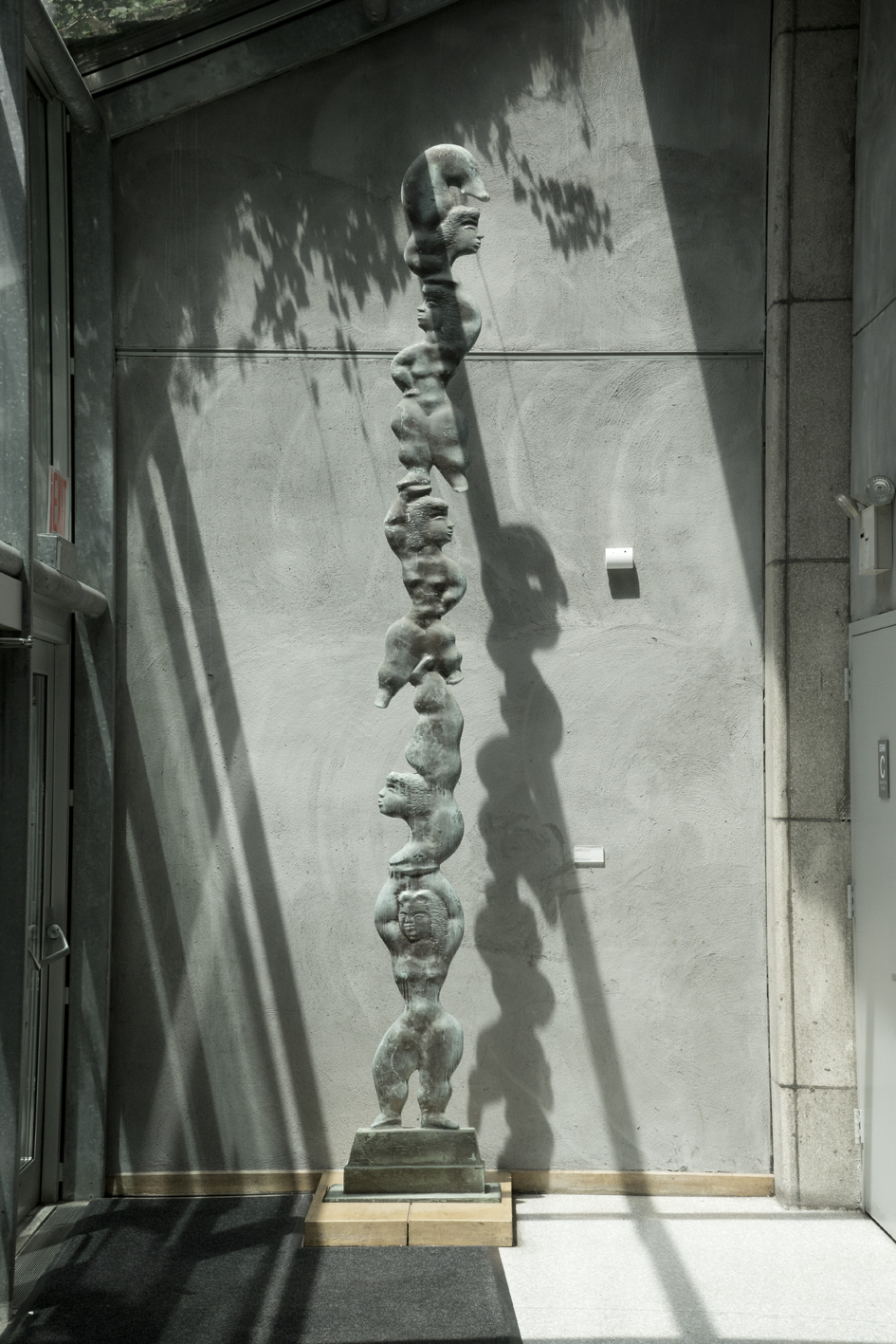
I don’t remember the first time I saw Chaim Gross’ 1951 sculpture Family of 5, but it was love at first sight. I immediately changed the way I entered 66 W. 12th Street each morning so I could see it. Its bronze has oxidized to a luminous fairytale green. It’s at least 10-feet high but less than 14 inches at its widest point. A stately, undulating shell of voluptuous female bodies, oddly it has almost no depth at all—it looks weightless.
The sculpture’s five female acrobats are perched one atop the other, each in its own distinctive pose. Unlike many depictions of females in art in which we lounge nude on divans, these women are literally holding one another up, standing on each other’s heads. Their breasts are pert, waists tiny, hips wide atop mighty thighs. I love the dichotomy of the acrobat’s powerful fleshy girth forming such a slender, graceful totem. There is also a delightful sense of whimsy, a quality often sadly lacking in too many bloated and oppressive bronze sculptures.
I asked two colleagues for their opinions of the sculpture.
The first person said: “I find it a little uncomfortable. Because they’re stacked on top of each other, it seems like they are ‘smooshing’ each other. It looks like Chinese acrobats in the stance but the bodies and features are not Asian. The figures are too overweight to be gymnasts so it doesn’t have the buoyancy gymnasts would have. It has heaviness to it. It’s very grounded. It’s not something I’d want to sit and ponder.”
The second person commented: “It’s very understated. I didn’t notice it at first. It struck me as ancient looking because it’s bronze and the shapes of the bodies look like ancient forms. It looks like a piece of art that you would see in a museum in the middle of the floor so it would be more noticeable.”
I find so much joy in Family of 5. Learning about Gross’s life enhanced my appreciation of it even more: His happy rural childhood which ended abruptly at age ten due to World War I; his flight from his native Austria for New York City, where he worked menial jobs while training to be an artist; and his lifelong fascination with the circus. And he taught for years at The New School!
I definitely do NOT want to change anything about the way the art is displayed. Please leave it where it is so I can visit it every day. The way light pours in on the sculpture through the Courtyard’s glass wall and the openness of the skylight above gives it room to soar.
Does knowledge of an artist’s life and influences make a difference in the way the viewer sees the work?
I recently learned that Gross was influenced by Chagall and Calder, two artists whom I love. Does the unknown influence of favorite artists subliminally affect your response to a work?
How does the display of a work of art reflect your response to it? If this work was hanging from the ceiling, or mounted to the wall, or outdoors, or in the middle of the floor where you could walk around it—would it affect you differently?
Juana Kennedy
Staff, The New School for Public Engagement

